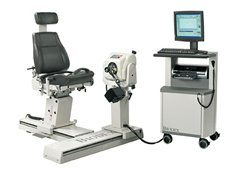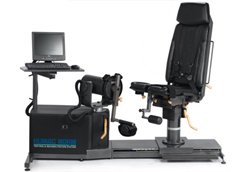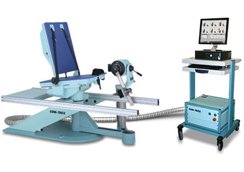Category: Theory
-
Reference the Site
How to reference the web site: Fill in the pieces in grey with the information relevant to your search LEAVE the sections in black as they are. Harvard style: Wimpenny P. 2000. THE NAME OF THE PAGE YOU ACCESSED (in italic or bold text) E.G. fundamentals explained basics (any further sub section is put in brackets like this e.g. the force…
-
References
Need to reference the web site???? A guide can be found here. Abe, T et al. (1992) Isometric and isokinetic knee joint performance in Japanese alpine ski racers, Journal of Sports Medicine and Physical Fitness, 32, (4), 353-357 Abernethy P, Wilson G, and Logan P (1995) Strength and power assessment: Issues, controversies and challenges, Sports Medicine,…
-

Biodex System 4
Redesigned seat accommodates athlete to pediatric applications, however does not lay fully flat. Easier to use Software features include: Reduced floor space Improved Work Simulation exercises Good after-sale support, installation and continuing education programs Isokinetic Resistance Mode The Isokinetic Resistance mode for testing and rehabilitation is totally accommodating throughout the entire range of motion. Biodex’s…
-

CSMI Norm
Norm from CSMI The HUMAC NORM is the number one solution for measuring and improving performance in the clinic, training room, and research laboratory. The best value all round machine available. Unparalleled Mechanical, Dynamometer, and Software Design Developed for the Exercise Science Lab and perfected in the Physical Therapy Clinic and Athletic Training Room the…
-

Con-Trex Multi Joint
Con-Trex offer several different isokinetic devices including: Con-Trex Multi Joint System: With the dynamometer on a swivel arm the Con-Trex MJ System offers good flexibility. The seat can be positioned for full lying positions. Very high torque levels from it’s AC motor, but does need a good power supply to reach it’s potential. The Con-Trx…
-
Bio-Mechanics
Isokinetics machines are measurement devices. They provide us with information about the moving mechanical performance of muscle groups. They assume (very incorrectly) that the muscles they are testing move at a constant angular velocity (or in other words that the muscle move isokinetically). Unfortunately, most biological joints do not possess a fixed axis of rotation…
-
Pre-Set Angular Velocity (PAV)
When we set a speed for the Isokinetic ROM we presume this is the speed the machine will force the lever arm to turn at (or in other words the speed at which the exercise/test will take place at). In reality this is almost true but if we want to be really technically correct then…
-
Acceleration-Deceleration
Whenever a movement is performed isokinetically we set a pre determined speed for the actuator to turn around (we presume the joint turns at a speed relative to this). However when the subject is waiting to begin the movement the machine is obviously not moving. So if we set an exercise to be performed at…
-
Moment Artifacts
Acceleration and deceleration affect the isokinetic range of motion significantly (see here for a full description). It has been shown that including the acceleration and deceleration portions of the range of motion during a test can seriously affect the results once the speed is increased (Taylor et al. 1991).When any test begins (isokinetic concentric or eccentric)…